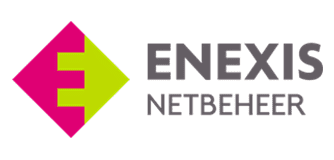Enexis Netbeheer and Info Support Pilot Incentives to Reduce Peak Load
The transition to renewable energy, characterized by fluctuating electricity supply and demand, poses challenges for grid operators. To reduce peak loads, Enexis Netbeheer and Info Support conducted a pilot, investigating the impact of financial incentives on more efficient energy distribution and lower grid loads.


Challenge
Better power distribution and thus lower grid load.
Target Audience
Grid operators.
Result
A portal where pilot participants can view their electricity consumption and better distribute power using financial incentives.
Rise in sustainably generated energy
With the advance of renewably generated energy, electricity supply and demand are becoming less and less predictable. The supply of electricity from renewable sources such as wind and solar is highly weather-dependent and therefore difficult to predict. Actually, the same applies to the demand for electricity. As more and more electric cars arrive, you often see a peak occur when the owners of these cars return home and start charging the car at the same time. In addition, homes are increasingly being heated electrically which leads to peaks when residents are home. The job of grid operators is to manage all this and keep supply and demand in balance.
Pilot network tariffs
At the same time, network operators must keep an eye on costs and ensure that they are not unnecessary. These costs are largely determined by the peak load; after all, the network must be adjusted accordingly. By reducing the peak load, the social costs can be kept as low as possible.
To find out which tools Enexis Netbeheer can use to achieve this, the company and Info Support conducted a pilot project among 255 employees. The six-month pilot examined the extent to which a financial incentive leads to behavioral change. The aim was to achieve better power distribution and thus lower grid load.
I am satisfied with Info Support. They thought with us how we could make use of something that has been developed before, therefore we were able to get started quickly.Tom van der Staak, Project Manager at Enexis Netbeheer
Delivered all software in 10 weeks through smart reuse
What was special was that the pilot used the MYenergyinsight portal and the underlying backend landscape. Info Support had previously developed both for Enpuls, a division of Enexis Netbeheer. With data from MYenergyinzicht, it was possible to keep participants informed of their current energy consumption per quarter-hour.
As of March 2019, Info Support was part of a multidisciplinary team. With a clear scope, the project team set to work building the architecture and making the portal suitable. Every two weeks a check was performed to make sure everything was going according to schedule. In the end, in (only) five sprints-a total of 10 weeks-everything was delivered according to the deliverables, costs and deadlines.
Scalable software architecture with modular design
To ensure that the software is easy to expand, a scalable software architecture with a modular design was chosen. This allows scaling up or down in the backend depending on the needs of Enexis Netbeheer. This used an MVC architecture in .NET Core with Azure Blob Storage as a caching layer. The stored data is calculated in the backend and then stored in Azure Blob Storage. Thus, all data is immediately available for real-time analysis. Choosing this application eliminates the need for an external database. In addition, this way the data is immediately put into the correct format without the need for manual operations. At the same time, a modular design was chosen so that it is easy to create a new or custom front end.